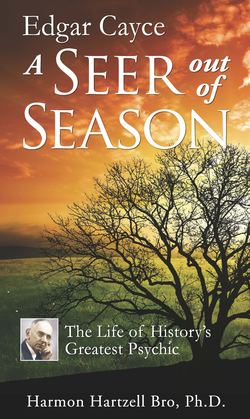Читать книгу Edgar Cayce A Seer Out of Season - Harmon Hartzell Bro - Страница 41
На сайте Литреса книга снята с продажи.
Feeding the Spirit
ОглавлениеIn the dimensions of the spiritual or the ultimate, my notebook entries of in showed Cayce also describing assimilation as a health process. Two images in the medical readings drew attention: breathing and communion.
Cayce made the same linkage of breath with prayer as had India, not unlike the biblical linkage of breath and wind with the Spirit. He even spoke of the quality of one’s life as being “a sweet odor unto the Lord.” His imagery on respiration as a spiritual emblem was vivid when he spoke of the breathing which occurs while absorbed in meditation or a worthwhile task, when one might rest lightly on the breath in the hush of focused attention. Such breathing was not technology, yet it had definite consequences for healing currents in the body, by affecting the kundalini centers and associated glandular function as one carried on exchanges with the ambient air. In using breathing as spiritual imagery Cayce appeared to counsel responsive trafficking with the universe, by allowing oneself to be met, accosted, and surprised, rather than everlastingly grabbing, grasping, and gobbling whatever could be of advantage. To be full one had to be filled, accepting gifts as gifts. Whether dancing, playing, puffing through a task, sighing, or singing, it made a difference to health to recognize that life came like breathing from invisible sources as blessing, not merely as goodies to be plucked and consumed. The unceasing traffic with the invisible air could be a model for a way of life that flowed rather than manipulated, which the ancients of my native China had long before described (and a reading cited) as the Tao.
The image of communing together also appeared in the medical counsel to signify the spiritual dimension of assimilation. “Until you can see in each person that you meet, though in error he or she may be, that which you would worship in your Lord, you haven’t begun to live aright” was Cayce’s demanding counsel. What he intended apparently was not a narrowing of focus to the other’s abstract essence, or a psychic trick of connecting with the other’s interior psyche, but a heartfelt effort to attend to the other person as a whole, unique being before God, which commanded one’s unreserved attention. Here he offered a direct parallel to Buber’s I-thou relationship, not as a posture to sustain at all times, but as an essential not to be left out of daily life.
Cayce made no effort to press on his listeners the rite of communion so prominent in his frontier-born denomination that formed part of each Sunday’s services as what he called “the Lord’s Supper.” Certainly he had presided at this ritual table as an elder or deacon many hundreds of times in the communities where he lived. The ceremony was dear to him, but in his readings he spoke of it only to make a point, for what might be called sacramental living: so engaging in everyday actions as never to be far from communing with the Source of life itself. In one reading he spoke of the Spirit as being “in, with, and under” all our lives—an ancient formula for communion as “an outward and visible symbol of an inward and spiritual grace.”
Traditionally the communion meal used a very small amount of food and drink to feed the person upon the life-renewing body and blood of Christ. In the medical readings theological language was not often pushed, but the point was made that whatever we fed upon with others, in our hearts, would take on form in proportion to its nobility. As breathing reminded us of our unseen Origin, moment to moment, so eating and drinking could remind us of incarnating our finest potential, won in commitment to others and not apart from them. In earlier centuries Christians had called the food and drink of communion or the Eucharist the medicine of immortality. Perhaps it was not too strange that Cayce should speak of feeding daily on spiritual reality, in the spirit of One who said, “Other food have I that ye know not of.”
Cayce seemed here to affirm something profoundly optimistic. Human beings could change. They needed help, even divine help from beyond themselves. But they were built on a large plan. The defeats, the failures, even the sins and monstrous evils, were not the last word about embodiment or about illness. Feeding on “whatsoever is lovely” could in patience (a cardinal concept here) transform even a broken body, a desperate heart, or a bewildered soul. By acting “line upon line, precept upon precept” in the spirit of communing with the Eternal, anyone might grow toward health. As truly as we could choose what to place in our mouths and to rub on our limbs, we could choose what to emphasize in our strivings. “Magnify the agreements and minimize the differences” was the counsel which put communing to the fore. The full outcome would be gift, as is each gulp of free air. But it would be found through that whole-souled attentiveness and receptiveness to others which might be called communing.
